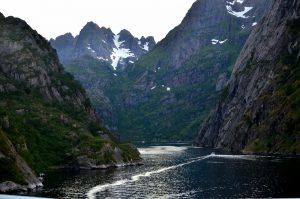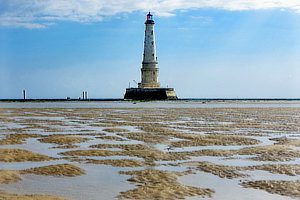Media
 FLICKR OVERVIEW
FLICKR OVERVIEW
I have more than 12,000 pictures on Flickr, organised in albums and sets.
Flickr gives me the following
1: An offsite secure repository for my most useful and treasured pictures
2: The opportunity to see some wonderful photography organised to illustrate things that interest me
3: A yardstick to measure my own photographs
4: A convenient and secure way to share images with friends, family and the wider Flickr community, some of whom have become friends
5: Some excellent software for organising and presenting image Groups
My flickr images are organised into Albums. Click here to view the Albums.

You Tube
As digital cameras have improved, the quality of video that can be taken has come on leaps and bounds. But, unless you are setting out to ‘shoot a movie’ it simply is not possible to generate a coherent set of video clips to assemble a proper video. The compromise is to mix video clips with stills, supported by music and commentary.
I have published videos in support of the section on this website that covers the preparation of cruise Logs. They can be seen by going to Legacy -> Log Preparation from the menu bar at the top of this page
Gradually I have assembled a series of videos on You Tube, including
Expeditions
2012 Around Cape Horn: Part 1 London to Punta Arenas
.
.
.
.
.

2012 Around Cape Horn Part 2: Punta Arenas to Puerto Montt
,
,
,
,
.

2012 Around Cape Horn: Part 3: Chilean Day Trips
.
.
.
.
.

2011 Hurtigruten cruise: Part 1 Norway
.
.
.
.
.

2011 Hurtigruten cruise: Part 2 Svalbard (Spitsbergen
.
.
.
.
.
Sailing

2011 A brief cruise tp to Alderney
.
.
.
.
.

..2010 So Phare, So Good (Cordouan) Southbound
.
.
.
.
.

2011 So Phare, So Good Northbound
.
.
.
.

.
.
.
.
.

.
.
.
.
.
.

2005 Scotland (“Puffin’ & Blowin”)
.
.
.
.

.
.
.
.
.New Zealand

.
.
.
.
.

.
.
.
.
.
.
The law of copyright is a jungle, and I have tried my best to comply with the copyright of the music I have used, mainly by acquiring the music from freesfx.co.uk, or purchasing a licence from the Apollo Orchestra website. I have sought the consent of C-
I have acknowledged the information sources and so far this has been sufficient to respond to any challenges from You Tube.
Still to be added
–
–
I have abandoned running my own blog, and content myself with occasional entries on Facebook. 
Log into Facebook and search for “Graham Rabbitts”

AIS
Automatic Identification for Ships (AIS) is now compulsory on all vessels over 150ft. Although warships are excluded, they usually carry the equipment. Many small fishing boats do too.
Without doubt AIS is the best addition to yacht safety in the last 25 years. I now carry a class B transmit and receive AIS displayed on my chart plotter.
Sometimes it is useful to be able to track friends or other vessels of interest. Fortunately, AIS has proved so useful to shipowners that, in addition to the normal transmission by VHF, many vessels transmit data by satellite. The best Internet display of AIS has been developed by the University of Athens. In fact, marinetraffic.com has become the de facto standard source of shipping information. Go to the site, see a target, click on it to see an amazing amount of data.
A current live display centred on the Solent is available from the AIS page of this website. For more sophisticated use, visit the main Marine Traffic site. [Have a play with the options available from the menu on the left.It is amazing what you can find out!]
From a leisure point of view, ‘fleets’ such as boats racing or cruising on company can be set up and tracked. No doubt new ways of developing this capability will emerge.
In addition to the ship’s course, speed last port and destination, full details of the ship size, speed and cargo capacity can be obtained. There are also images of many ships, and I have contributed to this growing library.

Following Susie
Normally, you sell a boat and move on
But when the buyer, Susie Goodall, entered the boat in the Golden Globe, single handed, non-
And when Susie, the new owner, was the only lady in the race, and the youngest competitor, then it has to be exciting!
Susie has a very good blog that can be seen by clicking here
The race started from Les Sables d’Olonne in July 2018, and the winners arriuved back there in January 2019. The first four boats finishing were all Rustler _36.
More details are available on the Golden Globe website
The rules were trying to re-
Trackers, radar enhancers, and EPIRBS were screened from the skipper.
As the fleet rounded Cape Horn, Susie was lying in 8th place. The leader, Jean Luc van den Heede (also sailing a Rustler 36) was 2000 miles ahead – showing his experience. The Southern Ocean took its toll and 2 boats were rolled and had to be abandoned before the fleet reached Australia. Leaving HObart, Susie was in 4th place. In the southern Pacific, the first two boats in the fleet were rolled or pitchpoled, but survived. Susie was not so lucky, having been badly pitchpoled and having the rig wiped off the boat. A dramatic rescue followed, with fantastic seamanship by the skipper of a Chinese freighter, and great skill and courage by Susie. Sadly the boat was abandoned, was leaking and has probably sunk. A sad, but valiant end to a much loved yacht. WE are still waiting to hear Susie’s account of the adventure.
 Serif Affinity
Serif Affinity
Logs and websites depend crucially on images. My chosen vehicle for processing images is Affinity, produced by Serif.
In October 2022, Serif launched a complete revision of the Affinity suite named Affinity 2. THe 3 main products are:
- Affinity Designer aimed at graphics design mainly using vector objects
- Affinity Photo which is a powerful photo editing suite.
- Affinity Publisher is a fairly comprehensive desk top publishing package. It is till under development
Taken together, these products match most of the capabilities of Adobe’s Cloud offer.
Each product is compatible with Mac, Windows, and the later iPads. File types are compatible across all three products and all three platforms. A function called Studio enables an open file in any one app to be processed in either of the other 2 apps seamlessly without leaving the first app.
The apps can be purchased separately for each platform at about £60 (Nov 2022), with the Ipad app costing just under £20 (Nov 2022). However, there is a universal licence covering all three apps on all three platforms (cost at Nov 2022 was £145). Discounted offers are fairly frequent. A private user can install the apps as many time as required on any/all platforms to which the user is registered. There is no subscription and, on past form, updates will be free until a version 3 is launched.
A Data Asset Manager (DAM) is still awaited. In the meantime I am using Daminion. Even though it does not technically support Affinity filetypes, they are accepted and integrate well across many functions. I have Logs, Videos, Presentsations, PDFs and many other file formats all integrated on the platform. Sadly, they changed to a subscription model for new users in 2021.
Why Affinity?
Affinity is a British product, with the Development team based just outside Nottingham.
When Adobe changed to a subscription model, many users switched to Affinity as being much more cost effective. The launch of Affinity 2 has correct many (but not all) of the missing features that those transferring from Photoshop required. Indeed several users have highlighted areas where Affinity has better capabilities than Photoshop.
There is an ever growing body of video tutorials available with the principle sources being
- Official site at Affinity Learn
- Official You Tube tutorials at Affinity, Affinity Photo, Affinity Designer and Affinity Publisher. (Also Affinity Photo for iPad)
- Official Blog called Spotlight, accessible from the Affinity main website
- A range of Facebook groups where help is willingly given, including Affinity, Affinity Photo Tutorials, Fans of Serif Software. Affinity Photo -Tutorials, Affinity Publisher, Affinity Designer, PIRC Affinity Designer & Photo, Affinity Designer, Photo & Publisher Group, Affinity Publisher, Affinity Publisher Tutorials…. and no doubt more!
- Numerous free You Tube sites. I find the Olivio Sarikas, In Affinity, Digitally Fearless, Isabel Aracama
- There are several paid courses. The one I have found most useful is the series by SimonFoster on Udemy covering Affinity Photo and Designer. They are currently being updated to cover the new capabilities of Affinity 2. These courses are frequently on offer and I have never paid more than £15 for each course.
Some of the early video tutorials have been abandoned by Serif, but they can be accessed by using the Affinity Quick Reference site. It has not been updated for a couple of years, but I still find it useful for finding some techniques.
The pace of development has been very rapid and I fear that the official tutorials have become a little disorganised. Lets hope Serif sort this out soon. That said, the official support forum works well. It can be accessed from the Affinity Quick Reference link mentioned above or directly from here
My Affinity Publications
All my recent Logs have been finished in Affinity Publisher with illustration support from both Photo and Designer. I have also had the temerity to publish some demonstrations (they are not good enough to be called tutorials) on how to prepare Logs (see the Legacy section of this website) and a few about Affinity itself.In particular
(a) I found the process of setting up character, paragraph and text styles complex, so I put together a video for my own benefit. Some people like it, others do not. It is called “Affinity Publisher – a first encounter” . It needs to be updated for V2.
(b) In producing some of my marine photos I have had to some complex selections, and have developed a techniqur for selecting rigging that I have not seen elsewhere. That video is called “Complex selection in Affinity Photo”
(c) After watching Simon Foster’s tutorials on Affinity Designer, I found the section on preparing a presentation did not explain how to transfer the information into a presentation app such as PowerPoint. After discussing this with Simon, he encouraged me to produce a video explaining the issues. It is called “Pathway to PowerPoint ” (A sample of the artboards can be downloaded here. The zipped file is a .afdesign file. It includes sample slide rows, amd ythe templates)
